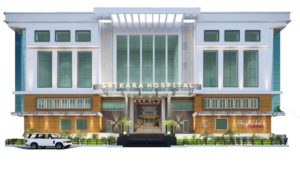A branch of surgery that deals with the reconstruction, restoration, or alteration of the human body. It involves surgical techniques to modify, enhance, or restore physical features, including the face, body, breasts, and skin.
Plastic surgery is useful for patients of all ages ranging from a child with a birth defect, a young adult injured or met with an accident, to an older adult with aging problems.
Plastic surgery differs from cosmetic surgery, which is carried out solely to get the desired look and enhance your appearance to feel more confident about your personality.
Plastic surgery helps with:
- Improvement of a person’s appearance
- Reconstruction of facial or other body tissue defects caused by illness, trauma, aging, or birth disorders
Plastic surgery can be used for conditions such as-
- Skin (skin cancer, scars, burns, birthmarks, and tattoo removal)
- Maxillofacial (the facial skeleton)
- Congenital anomalies (webbed fingers, deformed ears, cleft palate, and cleft lip)
Plastic surgery includes two procedures:
Reconstructive Plastic Surgery
Reconstructive surgery includes procedures to shape abnormal body structures and improve function and appearance. They include abnormalities caused by:
- Trauma
- Infection
- Developmental abnormalities
- Congenital anomalies (present from birth)
- Abnormalities due to medical conditions
- Tumors
This type of surgery is usually done to improve function but may also be done to change appearance.
Cosmetic Plastic Surgery
Cosmetic surgery usually includes procedures to improve the appearance by repairing or reshaping the normal structures of the body.
For example, rhinoplasty, also known as a nose job, is a cosmetic surgery procedure that involves reshaping and resizing the nose to improve its appearance and/or function.
Types of Plastic Surgery
Here are some of the major techniques used during plastic surgery,
Skin graft surgery- Healthy skin from an unaffected area of your body is used to replace lost or damaged skin.
Skin flap surgery- A piece of tissue is transferred from one part to another part of the body.
Tissue expansion- The nearby surrounding tissue is stretched to let the body grow extra skin, which can be used to reconstruct the nearby area.
Fat transfer or Grafting- Fat is removed from one area and inserted in another area to correct unevenness.
Vacuum closure- Suction is applied to a wound to draw out fluid and improve healing.
Risks of Plastic Surgery
Like other surgeries, plastic surgery also has associated risks.
However, the risk depends on the size of the affected area and the overall health of the person on which the surgery is performed.
General risks involved in plastic surgery include:
- Pain and discomfort
- Bleeding
- Infection
- Scarring
Contact a plastic surgeon if you have any surgery-related concerns like unexpected pain, swelling, or other unusual side effects.
How is Plastic Surgery Performed?
Plastic surgery involves several different techniques to manipulate the body tissue.
They will explain in detail about the type of procedure and what will happen before, during, and after the surgery.
Skin grafts are the most common type of plastic surgery, but newer techniques, like tissue expansion and flap surgery, are also often used.
Conclusion
Plastic surgery can be a life-changing decision that has the potential to improve self-esteem, confidence, and quality of life. With the right mindset, realistic expectations, and a qualified and experienced surgeon, plastic surgery can be a safe and effective way to enhance one’s appearance and achieve desired results.


